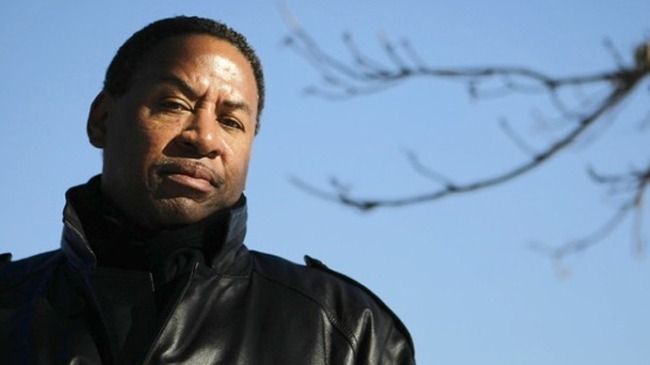Tuesday, March 19, 2013 • JANESVILLE, WI
JANESVILLE — Janesville engineer and physicist Bill Hyzer was renowned for decades as a pioneer in high-speed photography.
Using cameras that seemed to magnify and even freeze time at 8,000 frames per second, Hyzer showed scientists how a fly lands on a ceiling.
Those quirky, stop-action photographs of bullets exploding through such objects as cucumbers and soda cans? Hyzer’s work.
Hyzer, 88, has poured his life into six decades of research that includes a study of how geckos cling to glass surfaces and the development of electronic switches for a lunar landing module. His data analyses of lake freeze-thaw cycles are used in international studies on global warming and climate change.
Yet perhaps Hyzer’s most groundbreaking and unsung achievement was an invention he devised in a single afternoon. It also is the reason he was honored Friday by the national American Board of Forensic Odontology.
At a lunch meeting at a Holiday Inn in Freeport, Ill., in 1986, Hyzer said he listened to Kansas native Dr. Thomas Krause, an expert in forensic odontology, or “bite-mark” science, explain a conundrum to him.
At the time, criminal investigators had no tool other than the standard, one-dimensional ruler to measure and give scale to human bite marks often found on the bodies of violent crime victims. For complex reasons, the simple ruler is an unreliable tool for the job.
Hyzer sketched a solution on the spot. The two-dimensional “ABFO No. 2”—better known as the forensic bite-mark scale—was born.
The simple, L-shaped measuring tool changed Hyzer’s life and forever altered forensic science and the field of crime scene investigation.
The bite mark scale’s main use—a tool to help identify bodies through dental records and identify violent criminals from bite marks they leave on victims—has made Hyzer renowned.
More than 25 years since that Holiday Inn discussion, crime scene investigators in nearly every country in the world use Hyzer’s small, laminated plastic ruler while photographing everything from bite marks to tire tracks to bullet holes in walls.
Practically every crime lab and medical examiner’s office in the country uses Hyzer’s scale, and in most states in the U.S. the scale’s use is almost a mandate.
Hyzer now is 88. To date, about three million of his bite mark scales have been sold, according to members of the American Academy of Forensic Sciences.
His scale was a simple yet ingenious solution to a decades-old problem in forensic science.
To use bite marks as crime evidence, investigators must make exact photographic records of the marks. That’s done by taking pictures that include a measuring instrument laid next to the marks to show scale.
But a one-dimensional measuring tool—a simple ruler—cannot reliably give scale to photographic images because if photos are captured at even the slightest angle, uncorrectable distortion can occur.

Photo by Hyzer family
A sketchbook from 1986 shows Bill Hyzer’s solution to allow criminal investigators to measure and give scale to human bite marks on the bodies of victims. The resulting tool has changed forensic science and crime scene investigations. Hyzer, 88, was honored Friday by the American Board of Forensic Odontology.
“You needed to devise a scale that measured in two dimensions, not one,” Hyzer said. “So I sat there at the Holiday Inn and sketched out the solution on a piece of paper.”
The design is simple: a right-angle, two-sided ruler with circles at each of its three points. The circles are used to define and justify any measurable plane. That corrects the problem of distortion in crime photos.
The scale also has grayscale markers, which ensure perfect photographic color reproduction.
Hyzer had done research with lizards and flies, but he had no prior expertise with human teeth or bite marks. He almost couldn’t believe someone else hadn’t thought of the scale already. Yet nobody had.
“It’s the most thrilling feeling, like discovering an ancient cave that no one knew existed,” Hyzer said.
Don Simley, a forensic odontologist in Madison who presented Hyzer with his award Friday, said bite-mark analysis has proven at times to be an ineffective way to identify criminals.
Bite-mark science has come under fire in the past after some cases in which DNA evidence later proved people were wrongly convicted based on bite-mark evidence.
But the science often helps identify bodies that have been burned beyond recognition, and Simley said use of Hyzer’s scale once helped solve a case in which a young child choked to death on soap while being disciplined by a parent.
The child’s bite marks were in a bar of soap at home.
Hyzer did not get rich from his invention. In fact, he never even patented it.
“It was my contribution to keeping people who didn’t deserve jail out of jail, and putting people in jail who should be in jail.”
Meanwhile, the scale’s inventor is now down to just a few left. He’s given most of his supply away to family or friends.
“I’m down to two scales now. It irks me that I’d have to go and buy one,” Hyzer said.



